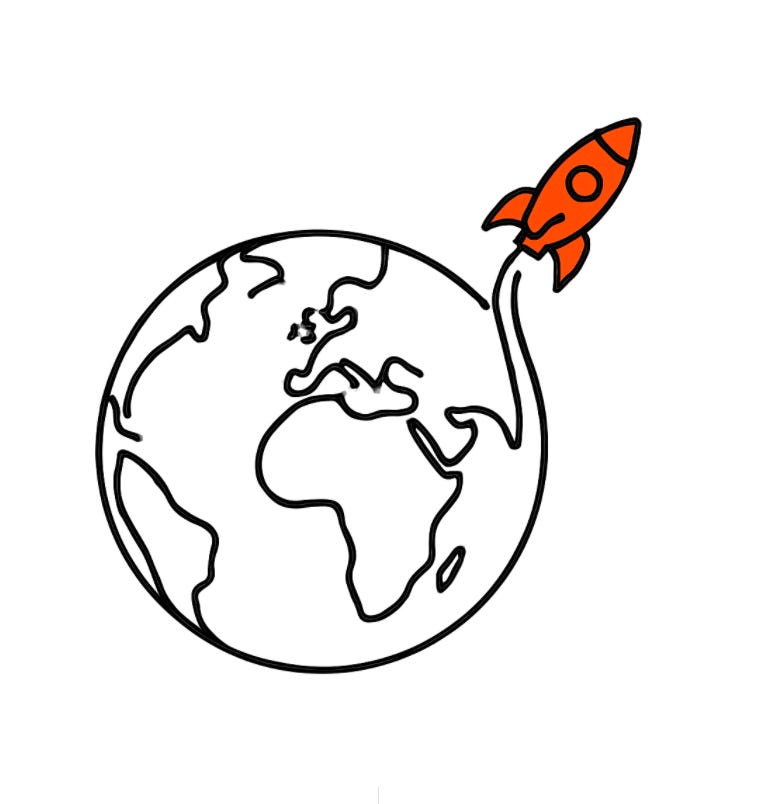Compete Against the Constraint
When you can’t change the system, build beyond it.
While many of us remain stuck - blocked by outdated systems that weren’t designed for what we’re trying to do - there’s a circle of leaders thinking globally, building boldly, and solving in smarter ways.
Being stuck may stem from:
A procurement process that rewards incumbents and locks out smaller or newer players, even if their solutions are smarter or more sustainable.
Barriers to accessing global talent, driven by external systems like visas and tax laws, and internal defaults like legacy hiring models and location-based thinking.
Funding pathways that struggle to assess or back intangible value, whether it’s data, design, know-how, or early-stage innovation.
Regulations written for old models, making it difficult to operate across borders with modern offerings like APIs, embedded finance, or decentralised tech.
A licensing or compliance system that doesn’t yet recognise alternative structures, like open networks, cross-sector collaboration, or digital-first delivery.
Trade policies and tariffs that increase the cost and complexity of exporting physical goods, while technical support remains limited for the diversification into digital, IP, or service-based exports.
The system says no - or not yet.
Yet the work can’t wait. Other market forces are moving: competitors are iterating, customers are shifting expectations, and adjacent sectors are moving faster than the rules can adapt.
So what do leaders who want to cross borders and break down barriers do when decision-makers close doors?
They don’t wait. They find a workaround.
Don’t Fight the System. Work around it.
In 2025, it’s common to feel the effects of systems that weren’t built for what’s next. They were designed to optimise, scale, or protect what was already known. That’s why the sharpest constraints show up when you’re building something novel - intangible, cross-border, counter-status quo.
At that moment, there are three options:
Continue to adhere to the status quo (stagnant).
Convince the system to change (slow).
Or build beyond it (smarter).
This is strategic design. Constraints highlight where to focus. They point to smarter paths, sharper thinking, and better ways to build.
Below are examples where individuals and organisations didn’t wait for permission. They didn’t fight the system. They worked around it. And in doing so, they moved the work forward.
It’s worth noting: This isn’t a celebration of scale or success. It’s a demonstration of what becomes possible when people and companies design around constraints and leave behind a path others can follow, adapt, and often improve upon.
Global Case Studies: Building Beyond the Block
Paul Krugman: Independent Analysis, Unconstrained
Nobel Prize-winning economist and long-time New York Times opinion columnist who left the Times after 25 years to write independently on Substack, citing editorial constraints and wanting space for more analytical writing with charts and in-depth analysis. As of August 2025, Krugman has over 410,000 total subscribers on Substack, a mix of free readers and paid subscribers contributing around US$7/month or US$70/year. Krugman’s Substack has become a significant platform, with high readership and influence outside traditional media.
And, he gets to work on his terms - which is worth celebrating!
Image: Paul Krugman, via paulkrugman.substack.com
Tala: Financial Inclusion Without the Banks
Tala bypassed traditional credit systems by using smartphone data - SMS patterns, payment history, and app usage - to assess creditworthiness for microloans. Operating in Kenya, India, and The Philippines, it didn’t wait for credit bureaus or banking reforms. It redefined eligibility on its own terms, making US$1.3B in loans accessible to underserved borrowers by 2025.
Project Kuiper: Amazon’s Space-Based Internet
Rather than wait for fragmented national telecom reforms, Amazon is launching over 3,000 satellites to deliver global broadband coverage. Its bet is to go above the system, literally. By building its own space-based internet layer, it sidesteps regulatory patchwork on Earth to reach under-connected markets.
ONDC: India’s Open eCommerce Network
To counter dominance by global platforms like Amazon and Flipkart, India launched the Open Network for Digital Commerce (ONDC). It’s a government-backed digital protocol that decentralises eCommerce and allows small traders and service providers to plug in.
Spotify: Flexible Licensing to Play Globally
Spotify is available in 237 countries. They didn’t challenge every country’s IP regime head-on. Rather, it adapted by licensing content market-by-market, tailoring deals with local collecting agencies, and offering regionally tuned plans. It built a business model that respected fragmentation without being blocked by it.
Tesla: Direct-to-Consumer Without the Dealers
Tesla bypassed traditional franchised dealership networks by selling cars direct-to-consumer. In some US states, it faced outright bans and still found legal workarounds, pop-up galleries, or delivery centres to meet customers.
BRAC & Grameen Shakti: Off-Grid Solar in Bangladesh
Faced with an unreliable electricity grid, NGOs like BRAC and Grameen Shakti rolled out solar home systems, financed via microcredit. They didn’t wait for utility reform. They gave households power, literally and figuratively.
Airbnb: Redefining the Market While Rules Lagged
In city after city, Airbnb launched before hospitality regulations existed for home-sharing. While controversial, its model forced legal clarity and consumer standards and demonstrated how platforms can create new market categories.
Market-Creating Leaders
Academic research and practitioner insights show that visionary leaders are often the ones who create entirely new markets and business models by working around outdated systems and redefining how value is created (Gestaldt, Abundance Global).
Rather than being confined by legacy structures, they sense emerging shifts early and respond by designing business models aligned to what’s next - whether through digital platforms, embedded finance, or open networks (HBR).
These leaders cultivate cultures of innovation, experimentation, and adaptability that allow their organisations to move ahead of the pack, often by establishing new ecosystems beyond conventional boundaries (ScienceDirect).
Strategic foresight is a core feature, enabling breakthrough offerings and sustainable growth that reshape entire sectors, not just products. From Steve Jobs to regional pioneers launching platforms outside established regulatory frames, these leaders initiate change (Forbes, MSU).
Still True in 2025:
Constraints Are Real.
And So Are Workarounds.
If momentum matters, so does the strategy of workarounds.
Questions worth asking, when stuck:
Is the constraint a by-product of the system, anchored in status quo thinking or the lived experience of decision-makers?
Are others already working around it, in different parts of the world or across adjacent industries?
What conversation could you have this week to unlock a viable workaround?
The answers can shift where we look, how we build, and how fast we move. And whether we keep pace with competitors who are already moving.
The circle of leaders achieving positive-sum outcomes in 2025 can - and needs to - expand.
It’s worth remembering when stuck: When we see the bigger picture, we can play a bigger game.
Leverage: Value That You’re Leaving on the Table
Every business holds untapped value. Not someday value. Today’s. Yet it’s often left dormant - in processes, know-how, underused assets, and overlooked markets.
Avoid Being Tethered
Albert Einstein owned a small wooden boat he called the Tinef - Yiddish for “piece of junk.”It wasn’t built for speed, or even for sailing far. It was built to drift.
Einstein would spend hours alone at sea, letting himself float aimlessly. To an outsider, it may have looked like inactivity. Yet, it was valuable work - creating the space for ideas to surface, for the mind to roam freely and reorganise what it already knew into something new. A friend once said, “To Einstein, this could simply provide more time to think.”





